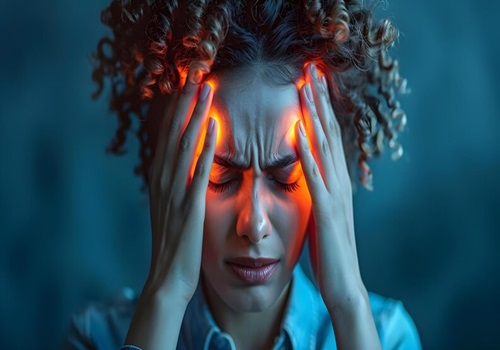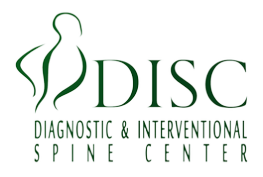Migraines can be extremely debilitating, attacking millions of people all over the world. Most headaches are normal and not severe, but migraines often involve intense throbbing pain or throbbing sensation that may vary in intensity, sensitivity to light and sound, and sometimes nausea or aura. Understanding how to manage migraines efficiently is essential in maintaining your quality of life. Check possible strategies to identify triggers, establish healthier habits, and find both natural and medical treatments available for your migraines.

Understanding Migraines
Migraines are headaches that are intensely throbbing, usually pulsating and contracted to one side of the head. People who suffer from migraines usually have nausea, vomiting, and photophobia as well as phonophobia. The headache periods can vary from a few hours to several days. Stress, certain foods, hormonal changes, and environmental factors usually activate them. The causes behind the condition are not well understood, but it is believed to have a genetic aspect and some form of chemical changes in the brain. Relatively effective options for treating the condition include medication, lifestyle adjustments, and natural remedies; all these help reduce the frequency and intensity of migraine attacks.
- Migraines with Aura: These include warning signs like visual disturbances or tingling sensations.
- Migraines without Aura: These occur suddenly, without any preceding symptoms.
- Chronic Migraines: Experiencing migraines more than 15 days a month falls into this category.
Symptoms differ from person to person but may include throbbing pain on one side of the head, nausea, and heightened sensitivity to light and sound, and thus, very few people can ignore these symptoms for long. Knowing the type of migraine experienced can help in tailoring specific management.
Identifying Triggers
Identifying migraine triggers is key to managing and preventing attacks. Common triggers include stress, hormonal changes, certain foods like chocolate, caffeine, and aged cheeses, as well as environmental factors like bright lights or strong smells. Weather changes, dehydration, and lack of sleep can also set off a migraine. Keeping a migraine diary to track symptoms and possible triggers can help pinpoint individual causes. Once triggers are identified, lifestyle changes such as regular sleep patterns, hydration, and stress management can be implemented to reduce the frequency and severity of migraines, offering a more proactive approach to treatment.
- Stress: A major contributor due to its impact on the body’s cortisol levels.
- Dietary Choices: Foods like aged cheese, chocolate, and caffeine may provoke migraines in some people.
- Sleep Patterns: Irregular sleep, either too much or too little, can trigger migraines.
Consider keeping a migraine diary to help identify your triggers. Note what you ate, how much you slept, and your stress levels before the migraine occurred. This practice can uncover patterns that help you avoid future episodes.
Lifestyle Adjustments for Migraine Relief
Lifestyle adjustments play a crucial role in managing and preventing migraines. Regular sleep patterns, staying hydrated, and maintaining a balanced diet are key factors in reducing migraine frequency. Incorporating stress management techniques, such as yoga, deep breathing, and mindfulness, can also help minimize triggers. Regular physical activity, like walking or swimming, improves overall health and reduces tension that may contribute to migraines. Avoiding known triggers, such as specific foods or environmental factors, is essential. Additionally, creating a migraine-friendly environment, with dim lighting and minimal noise, can provide relief during an attack. These changes support improved overall well-being and more effective migraine management.
- Maintain Sleep Hygiene: Aim for a consistent bedtime and avoid screen exposure an hour before sleep.
- Manage Stress: Techniques like yoga, deep breathing, and mindfulness can reduce the tension that leads to migraines.
- Stay Active: Moderate exercise, such as walking or swimming, can improve circulation and release feel-good endorphins.
- Hydrate and Eat Mindfully: Drink plenty of water and focus on a balanced diet rich in fresh produce and lean proteins.
These adjustments not only reduce migraines but also enhance overall well-being.
Medical Treatments and Therapies
Acute and prophylactic medications constitute the treatment for migraine attacks. It means that acute medications refer to those treatments that are given when symptoms occur in an attack, such as ibuprofen, aspirin for over-the-counter preparations, and triptans, and ergotamines for prescription use. The goal of prophylactic therapies is to reduce the frequency and severity of migraines, including beta-blockers, antidepressants, and anticonvulsants. Some newer additions include newer agents like the CGRP inhibitors or even Botox injections for chronic sufferers. Lifestyle changes, such as stress management, proper sleep, and hydration, shall accompany medical treatments to provide better control over this migraine disorder. Consultation with a health care provider is therefore necessary so that he or she can provide the patient with appropriate treatment modalities.
- Medications: Over-the-counter options like ibuprofen can help with occasional migraines, while prescription drugs like triptans are used for more severe cases.
- Physical Therapy: This can alleviate tension in the neck and shoulders, which are common migraine pain contributors.
- Innovative Treatments: Options like Botox or nerve block injections have shown promising results for chronic migraine sufferers.
Consulting a healthcare provider ensures that your treatment plan is personalized and effective.
Natural Remedies and Home Care
Natural remedies and home care can offer effective relief for migraine sufferers. Simple methods like applying a cold compress to the forehead or resting in a quiet, dark room can help reduce pain. Herbal teas, such as ginger or peppermint, are known for their soothing properties and can help alleviate nausea. Acupressure, yoga, and meditation are also beneficial in relieving tension and promoting relaxation. Staying hydrated, maintaining a regular sleep schedule, and avoiding known triggers like certain foods can prevent migraines from occurring. These home treatments, combined with a healthy lifestyle, can significantly improve migraine management.
- Herbal Supplements: Magnesium and feverfew are popular choices with evidence supporting their effectiveness.
- Aromatherapy: Essential oils like peppermint and lavender can offer calming effects.
- Cold Compresses: Placing a cold cloth on your forehead may soothe throbbing pain.
These remedies are cost-effective and can be used alongside other treatments for optimal relief.
Coping Strategies for Chronic Migraines
Debilitating conditions like chronic migraines often require a multi-faceted approach that can help to minimize the frequency and severity of attacks. The mainstays of therapy include ensuring regular sleep patterns, staying well-hydrated, and techniques to manage stress, such as yoga and meditation. It is also possible to identify and avoid triggering circumstances personal to the individual, such as certain types of foods or exposure to specific environmental factors. Medications for both prevention and acute attacks are also available, and alternative treatments such as acupuncture and biofeedback can also be used. An environment conducive to keeping migraine away, such as minimizing bright lights and loud sounds during an attack, can alleviate the symptoms. Additionally, the headache diary helps to identify patterns and thus enhance the treatment plans.
- Build a Support System: Connect with others who understand your challenges through support groups or online communities.
- Plan for Flare-Ups: Have a strategy in place, such as a designated rest area or an emergency migraine kit with essentials like medication and sunglasses.
- Prioritize Mental Health: Migraines can take a toll on emotional well-being. Practices like journaling or therapy can help maintain a positive outlook.
Remember, resilience is built over time, and small steps can lead to significant improvements.
Conclusion
Managing migraines is both an art and a science, requiring a combination of lifestyle adjustments, medical treatments, and natural remedies. By understanding your triggers, adopting healthier habits, and seeking professional guidance, you can significantly reduce the impact of migraines on your life.
